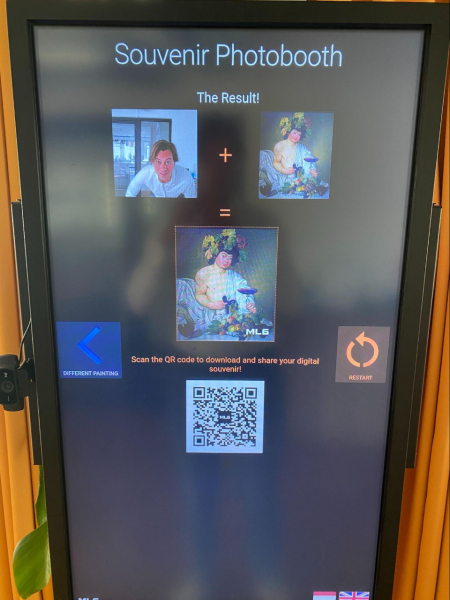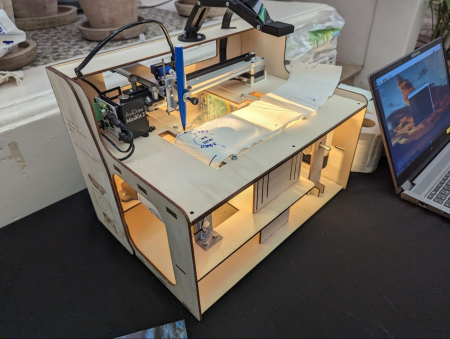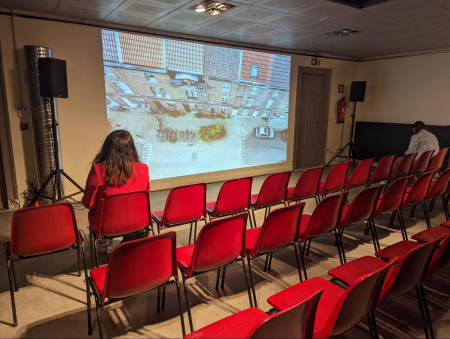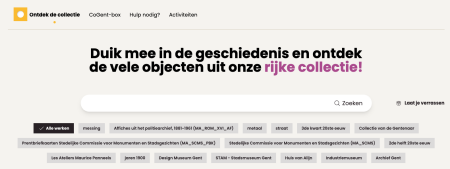Collections of Ghent: a look at the results
15 Sep 2023We have already said and written (link in Dutch) a lot about the Collections of Ghent (CoGhent) – a participatory project that recently concluded after three years, just before the summer. Alongside numerous partners, our aim was to create tools and techniques that would facilitate a faster and simpler connection between citizens and Ghent’s cultural heritage. But have we succeeded? And what activities has meemoo been busy working on over the last year? Let’s take a look back.
What is the key to connecting cultural heritage, technology and the residents of Ghent? Linked open data. We have utilised Linked Data Event Streams (Link in Dutch) (applied for the first time in a heritage context in CoGhent!) to create a technical infrastructure that enables access to data and images from five Ghent institutions. The heritage from Design Museum Ghent, STAM (Ghent City Museum), Museum of Industry, House of Alijn and Ghent Archive has been made available to various target groups in different ways:
Creative reuse of the collection
Meemoo, together with iDROPS, has supported the Co-creation Fund over the past year to encourage the people of Ghent to work with the heritage data from the Collections of Ghent in an innovative way. Thirteen projects – five technical and eight creative in nature – have received financial support from the fund. We guided the participants in their journey.
A selection of the various projects:
‘Which famous Ghent resident are you?’ (by Lucas Desard/ML6): a photobooth that uses face detection and face swapping algorithms to overlay your face with portraits from the Collections of Ghent;
‘Linked ARTeveldestad’ (by Dieter De Witte/UGent), a navigation app that uses machine learning (image recognition and text analysis) to link heritage with locations in the city;
‘The Ghent loo roll’ (by Wouter Devriese): a playful installation that prints toilet paper with random timelines and line drawings of objects from the Collections of Ghent by linking descriptive metadata;
‘1000 years of Gentsekoop’ (by Gentsekoop), a guide that links heritage from the Collections of Ghent with 25 local businesses and their premises and neighbourhoods;
‘Whose street is it?’ (by Koos Fransen/str-aat) and ‘The Textile Industry’ (by Idries Bensbaho/IQRA), two documentaries that use both new footage and archival material from the Collections of Ghent.

Pictured: Demo of the faceswap Photobooth at the CoGhent festival, licence: CC0.

Pictured: Demo of the faceswap photobooth at the CoGhent festival, licence: CC0.

Pictured: ‘The Ghent loo roll’, licence: CC0.

Pictured: Screening of ‘Whose street is it?’ at the CoGhent festival, licence: CC0.
Curious about all the projects? Discover the details and all the creators here. The results were also showcased at the CoGhent festival (link in Dutch) last June.
CoGhent and OSLO
When talking about linked open data, we cannot ignore the Open Standards for Linked Organisations (OSLO). CoGhent was the first project in Flanders to implement this standard in the cultural heritage sector. To share the knowledge gained, the OSLO working group was established within CoGhent, with meemoo also involved. Among other things, the working group supported three institutions in their implementation of the OSLO standard (link in Dutch).
At the request of Informatie Vlaanderen and in collaboration with the Collections of Ghent, meemoo also linked the Objects Entry Book - the handbook with description rules for documenting heritage objects in a collection management system – with the OSLO application profiles for Erfgoed Object (‘Heritage Object’) and Erfgoed Event (‘Heritage Event’). This resulted in a data profile that allows you to express information elements from the basic registration data as data that’s in line with the OSLO standard.
A boost for social cohesion?
Publishing collections as linked open data so that everyone can work with them was one of the project’s goals. CoGhent also aimed to promote greater cultural participation in the city, thereby strengthening social cohesion at neighbourhood level. It is difficult to measure whether the project has succeeded in this aspect, but an analysis conducted by project partner Ghent University does show that cultural heritage and community work mutually reinforce each other, with the Collections of Ghent having a catalytic effect. The project’s public activities, for example, brought people together to reflect on their shared heritage.
Interested in learning more? Read the impact assessment report here.

